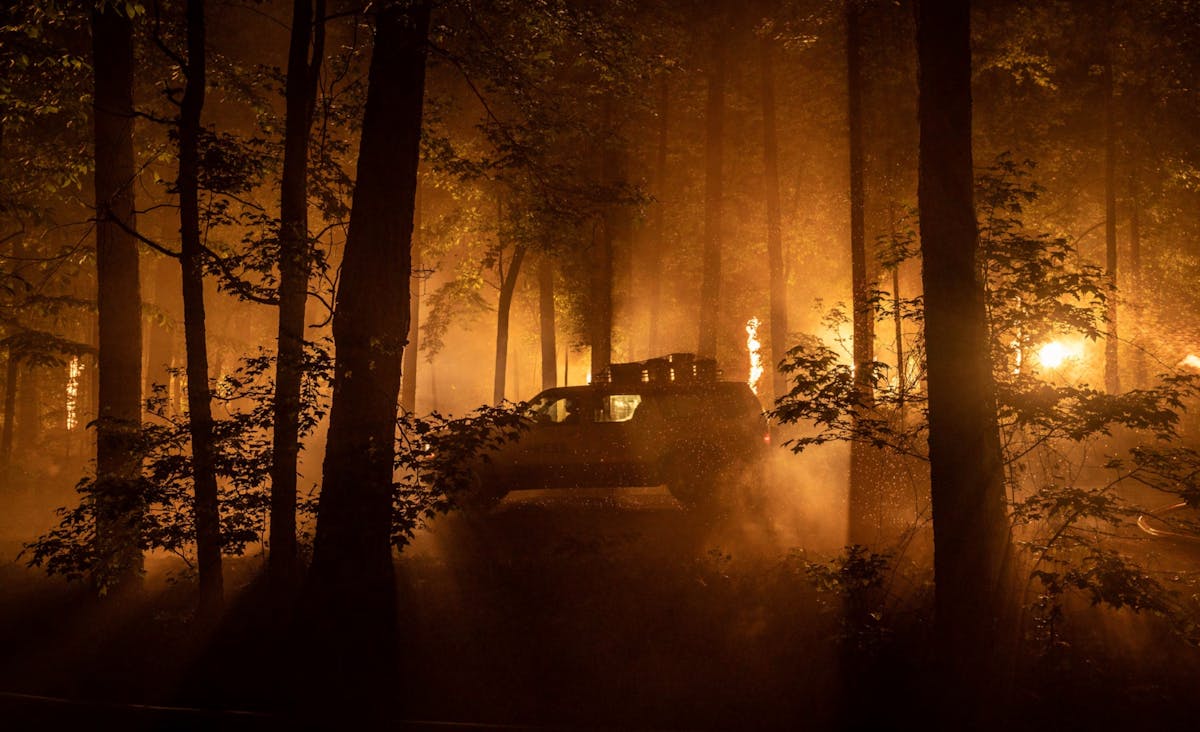‘Civil War’ Captures an Apocalypse With No Abraham Lincoln in Sight
Brutal and bloody, the newest conversation starter from A24 is a punch to the gut and a dirge for the Republic.

“Civil War” opens Friday at New York City, but its rendering of Gotham owes more to the ruins of Raqqa than a peacetime metropolis. Things only get worse. This vision of an America tearing itself apart one freeway at a time comes courtesy of the writer and director Alex Garland, whose “Ex Machina” disclosed him to be an auteur well versed in the unnerving cadences of dystopia. Here, he hauls horror to the heartland.
For a movie called “Civil War,” there is little about how the nation came to be shredded. The factions include the “Loyalist States,” headquartered at the District of Columbia — the rump of Hamilton’s hopes — and the “Western Alliance,” which unexpectedly comprises Texas and California. There is a “Florida Alliance,” as well as a “New People’s Army” holding territory in the Northwest. This is not North against South. It’s all against all.
“Civil War” cannily eschews ponderous exposition of casus belli or the outlining of ideological differentiation. Instead, it presents battle close to the bone and a view of violence that is intimate and disordered. It is less interested in why war happens than how it is seen and felt. That’s why its protagonists are journalists, and largely photographers. Also, that’s why it is gorgeously shot, with a wandering eye for the flower blooming in the charnel house.
The movie’s protagonist is a veteran photojournalist named Lee Miller, played with a sweet and sour stoicism by Kirsten Dunst. She’s seen it all, and her Leica is witness to effects of flame and firearms on human flesh. The opening scene of “Civil War,” of a protest that boils over and then goes boom from the blast of a suicide bomber, delivers a portrait of an adrenaline artist of extremity. She shares a name with the photographer who was first into Dachau.
Miller embarks on a journey to Washington, D.C., from New York to secure what would be the scoop of the century — a photograph and interview with the president, played by Nick Offerman, before he is captured or assassinated. She is joined by two veteran journalists, Joel, played by Wagner Moura, and Sammy, in the person of Stephen McKinley Henderson. They are joined by a neophyte, Jessie, who embarks on a bloody bildungsroman.
The plot is picaresque, with fresh horrors lurking off every exit ramp. A gas station doubles as a gallows, and an amusement park becomes the site of a siege so long that neither side remembers for whom they fight. A bombed-out J.C. Penney telegraphs that even retail is ruptured in this reality. Mr. Garland’s battle scenes are triumphs of grim choreography — tight, claustrophobic, nerve wracking, and, like war itself, thrilling.
Mr. Garland’s focus is bifocal — his cameras are mirrored by the ones carried by his characters. Like the viewer, they are close to the carnage but can only record, not resist. The film’s grim pleasures are a sense of camaraderie forged from peril and the securing of a masterful image of a massacre. The characters occasionally come undone, but they also crave being at the vortex of violence. They are junkies whose drug of choice is danger.
“Civil War” is something like the cinematic spawn of Jack Kerouac’s “On The Road” and Cormac McCarthy’s “The Road,” with a foreboding drawn from his own “28 Days Later.” One scene of mass murder — bodies in a trench sprinkled with lime — stands out for its madness. It will reduce your nerves to ribbons, a set piece of pointless killings that throws into sharp relief the horror of Russian roulette in real time.
The movie’s pièce de résistance is its final scene, an assault by the Western Alliance on the White House. Its choreography is a mesmerizing spray of bullets and clicks of cameras. It is a hunt for prey and a search for the shot that will capture how a successor to Lincoln found himself likewise in the crosshairs. There are no exact analogues to present politics, as if to say that when the unraveling comes it will be worse than we can now imagine.

